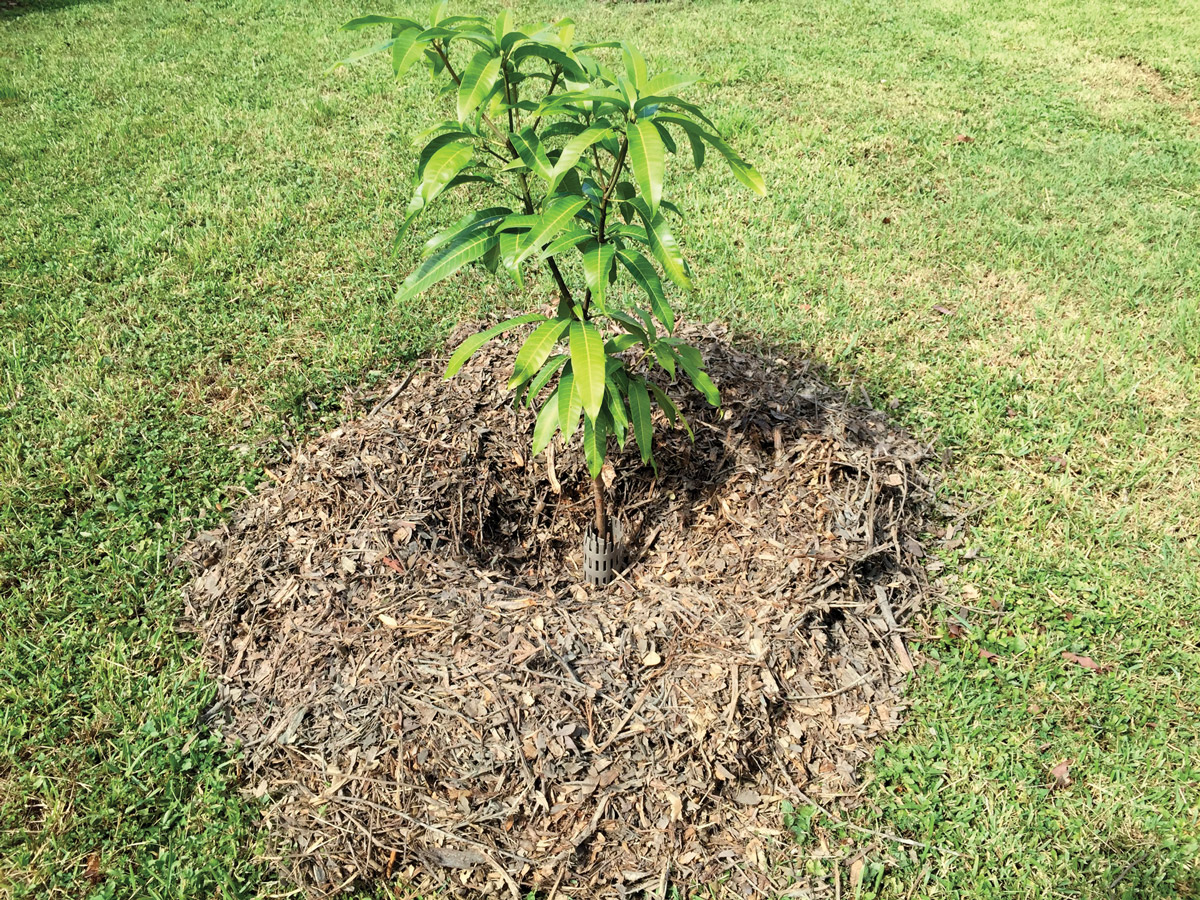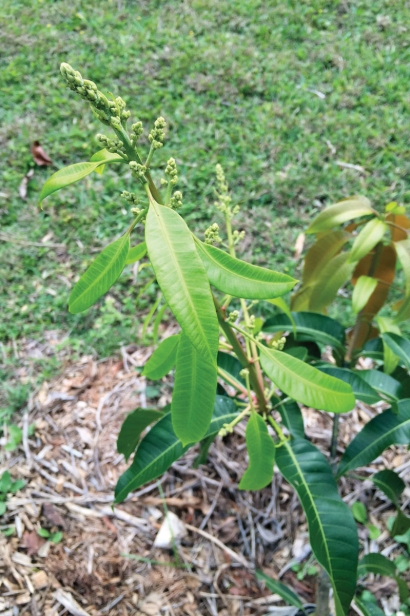Time to Plant Fruit Trees
Summer is the best time to plant your fruit trees. High humidity and rainfall will help your new tree establish itself. Our rainy season typically lasts through late October, so what are you waiting for?
Where to Plant
Almost all fruit trees need to be planted in full sun. Choose an area that’s large enough to allow the tree to grow to at least 12 feet by 12 feet and still get a large amount of sunlight. The planting area should not hold water after a heavy rain. Don’t plant fruit trees in the middle of a lawn that’s going to be irrigated and fertilized – too much irrigation and nitrogen have negative impacts on fruit production.
How to Plant
Plant fruit trees as soon as possible after you buy them in native soil. Augmenting the soil with additives in not recommended. Dig a hole for the tree just larger than the root ball, using a pick-ax to break up the limestone rock. The most important factor is planting at the correct depth. The first lateral root, also called a flare root, will guide you as to what level the tree should be planted. The flare root should be at or slightly above ground level. Break up the root system before the tree goes into the ground and make sure that the tree is not root-bound (has circling roots). Trees that have not been kept in containers for too long normally have healthy roots.
Aftercare
Young trees need to be protected, so place a mulch barrier around the tree. At least one bag of mulch should circle the young tree. Pull the mulch away from the tree’s trunk so it doesn’t come into contact with the trunk. The mulch barrier protects the young tree from string trimmers and other mechanical damage. Always water at planting, and then water every two to three days after that until the summer rains begin, or until the tree has put out two new flushes of growth. Too much water can cause the tree’s roots to rot. Stake the tree. If it has a label, make sure the tree tape or label is not too tight on the plant, causing it to be girdled.
Fast Production
Most fruit trees are propagated by grafting, a type of asexual propagation. Grafted trees are a clone of the parent tree, so they keep all of the characteristics of the mother plant. They also skip the stages of growth and maturity that a tree planted from seed would have to go through, so they’re ready to fruit and flower immediately. It typically takes two to three years before a tree is ready to produce fruit.
Questions? Call a UF/IFAS extension agent at 305-248-3311. Homeowners: Adrian Hunsberger (ext. 236); commercial tropical fruit growers: Jeff Wasielewski (ext. 227); commercial vegetable growers: Qingren Wang (ext. 234).







